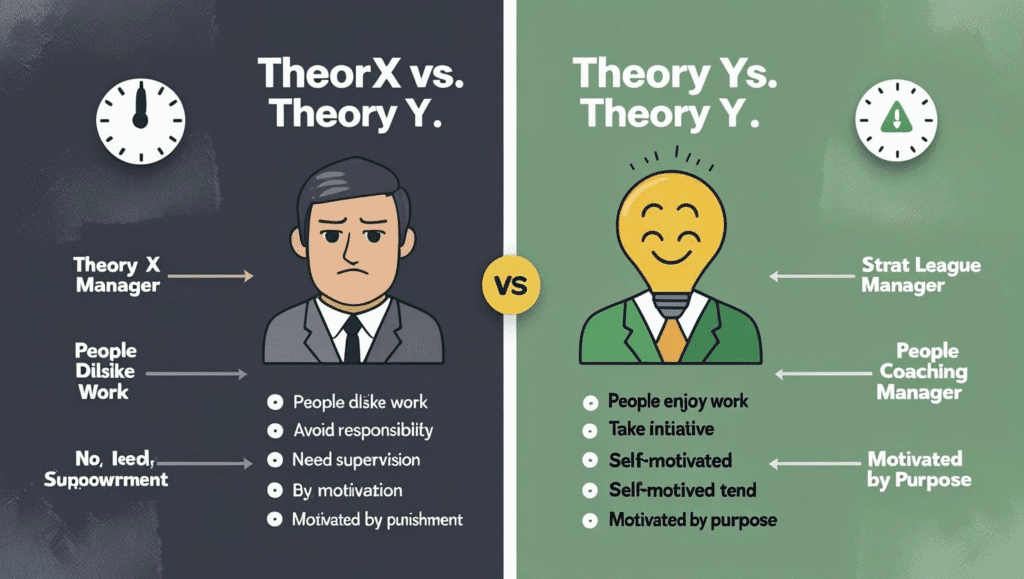8 Key Benefits of Strategic Planning: Financial Gains & Non-Financial Wins
In the dynamic US economy of 2025, strategic planning is far more than a corporate buzzword—it’s the definitive process that separates thriving, resilient businesses from those that merely survive. It is a disciplined effort to produce fundamental decisions and actions that shape and guide what an organization is, what it does, and why it does it. While the process demands rigor, the rewards are profound, manifesting in both tangible financial returns and invaluable non-financial strengths that build a lasting competitive advantage.
The Financial Payoffs: Tangible Returns on Strategy
At its core, a business exists to be financially viable. Strategic planning directly impacts the bottom line by creating a clear, data-driven roadmap to profitability and sustainable growth. These financial benefits are often the most celebrated outcomes of a successful planning cycle.
1. Enhanced Profitability & Revenue
This is the most direct financial benefit. A strategic plan forces an organization to look beyond its current operations and proactively identify new revenue streams, optimize pricing models, and target high-growth market segments. By analyzing market trends, consumer behavior, and competitive landscapes, companies can make informed decisions to increase sales. Simultaneously, strategic planning uncovers operational inefficiencies. It prompts questions about supply chains, production processes, and overhead costs, leading to streamlined operations that lower the cost of goods sold and improve profit margins. This dual focus on both growing the top line and managing the bottom line is a powerful driver of enhanced profitability.
A US-based apparel retailer, facing competition from fast-fashion giants, uses strategic planning to analyze consumer data. They identify a growing demand for sustainable and ethically made clothing among millennials. They strategically pivot to source organic materials and launch a new, higher-margin product line focused on this niche, resulting in a 15% revenue increase and improved brand loyalty.
2. Optimized Resource Allocation
Every business, regardless of size, operates with finite resources—capital, time, and talent. Without a strategic plan, these resources are often allocated based on historical precedent, departmental politics, or short-term needs, leading to significant waste. Strategic planning provides a clear set of priorities. It allows leadership to channel funds and personnel towards projects with the highest potential return on investment (ROI) and those that are most aligned with the company’s long-term vision. This prevents the organization from spreading itself too thin across dozens of low-impact initiatives and ensures that its most valuable assets are focused on activities that create the most value.
A tech startup in Austin, Texas, has enough funding to hire five new software engineers. Without a plan, they might assign one to each of their five different product ideas. Through strategic planning, they identify that one specific product feature has the greatest potential for market disruption. They allocate all five engineers to that single project, accelerating its development and securing a first-mover advantage that leads to a successful Series B funding round.
3. Increased Market Share
Gaining market share is a result of being proactive, not reactive. Strategic planning is an inherently proactive process. It involves a deep analysis of competitors’ strengths and weaknesses, allowing a company to identify and exploit gaps in the market. By understanding what competitors do well and, more importantly, what they do poorly, a firm can craft a unique value proposition. This could involve offering a superior product, a more efficient service, a better customer experience, or a more innovative business model. A clear strategy enables a company to concentrate its marketing and sales efforts on the most promising customer segments, leading to more effective campaigns and a greater share of the target market over time.
A mid-sized manufacturing firm in Ohio making industrial pumps realizes through its strategic analysis that its larger competitor has a slow, inefficient customer support system. It launches a “24-Hour Service Guarantee” campaign, a key part of its new strategic focus on customer-centricity. This move attracts competitors’ frustrated clients, resulting in a 5% gain in market share within two years.
4. Improved Financial Stability
The business world is fraught with uncertainty, from economic downturns to supply chain disruptions and sudden shifts in consumer preferences. Strategic planning builds financial resilience by encouraging foresight. The process includes scenario planning and risk assessment, prompting leaders to ask “what if?” This leads to the development of contingency plans and mitigation strategies. For instance, a plan might call for diversifying revenue streams to reduce dependency on a single product, or building stronger relationships with multiple suppliers to avoid a single point of failure. By anticipating potential threats, a company can take proactive steps to protect its cash flow and balance sheet, ensuring greater stability during volatile times.
A food distribution company based in Illinois, during its 2023 strategic planning, identifies rising geopolitical tensions as a major risk to its primary overseas supplier. The company proactively dedicates resources to vetting and establishing relationships with two domestic suppliers. When international shipping costs skyrocket in 2025, the company is able to pivot to its domestic partners with minimal disruption, maintaining stable pricing and delivery schedules while its competitors struggle.
The Non-Financial Victories: Building a Resilient Organization
While financial metrics are crucial, they are often lagging indicators of success. The non-financial benefits of strategic planning are the leading indicators—they create the healthy, aligned, and agile culture that ultimately produces those financial results.
1. Clearer & Faster Decision-Making
In the absence of a strategy, decision-making can be slow, inconsistent, and driven by personal biases. A well-articulated strategic plan provides a powerful framework—a “North Star”—that guides choices at all levels of the organization. When a new opportunity or challenge arises, managers and employees can ask a simple question: “Does this align with our strategic priorities?” This shared set of criteria streamlines the decision-making process, reduces internal conflicts, and ensures that choices made in different departments are complementary rather than contradictory. It empowers teams to make faster, more confident decisions without constantly seeking approval from senior leadership.
A regional hospital system in the Southeast has a strategic goal to be the leader in patient-centric care. When faced with a decision to either invest in a new, expensive administrative software system or new patient-monitoring technology, the choice is clear. They choose the patient-monitoring tech because it directly supports their core strategic direction, a decision made quickly and with unified support from the leadership team.
2. Enhanced Organizational Alignment
One of the most powerful non-financial benefits is the creation of a cohesive, aligned organization. Strategic planning is a unifying process. It forces leaders from different departments—sales, marketing, operations, finance—to come together, debate, and agree on a single, shared direction for the future. This breaks down departmental silos. Once the plan is communicated effectively, it ensures that every team and every individual understands the company’s main objectives. The marketing team creates campaigns that support the sales team’s targets, and the operations team builds capacity to meet the projected demand. This synergy eliminates wasted effort and internal friction, creating a powerful momentum towards the shared goals.
A national non-profit organization focused on literacy develops a strategic plan to increase its reach in underserved rural communities. This clear goal aligns all departments. The fundraising team targets grants specific to rural education, the marketing team develops outreach materials for community centers, and the program team designs mobile libraries. Every action is aligned, amplifying their overall impact.
3. Increased Employee Engagement
Top talent in today’s workforce seeks more than just a paycheck; they seek purpose. A strategic plan provides that sense of purpose. When employees understand the company’s vision and see how their individual roles contribute to achieving it, their work becomes more meaningful. This clarity is a powerful motivator. It fosters a sense of ownership and pride, leading to higher levels of discretionary effort, creativity, and commitment. Engaged employees are more likely to be proactive, innovative, and loyal, which directly impacts productivity and reduces costly employee turnover. The strategic plan transforms a job into a mission.
A software company in Silicon Valley, facing high turnover among its engineers, implements a more transparent strategic planning process. They clearly articulate a new vision to build “tools that empower small businesses.” By connecting every software update and new feature back to this mission, engineers see the direct impact of their code on real-world users. Engagement scores rise, and voluntary turnover decreases by 20% in the following year.
4. Improved Adaptability & Foresight
The very act of strategic planning cultivates a forward-thinking culture. By constantly scanning the external environment for opportunities and threats (a key part of the process), the organization becomes more attuned to the world around it. This builds an “early warning system” for potential disruptions, whether they are technological, regulatory, or competitive. It shifts the company’s mindset from being reactive to proactive. Instead of being caught off guard by change, a strategically-minded organization is better prepared to pivot and adapt. This agility is one of the most valuable assets a company can possess in a rapidly changing world, allowing it to seize opportunities and mitigate threats before its competitors even see them coming.
An automotive parts supplier in Michigan, through its strategic environmental scanning in 2020, identifies the accelerating shift to electric vehicles (EVs) as both a threat to its traditional business and a massive opportunity. The company proactively creates a strategic initiative to invest in R&D for EV battery components. By 2025, when major automakers dramatically ramp up EV production, the supplier is already a key player in the new supply chain, ensuring its long-term relevance and success.
Conclusion: A Dual Advantage for Lasting Success
Strategic planning offers a powerful dual advantage that is essential for sustainable success. The financial benefits—higher profits, better resource use, greater market share, and improved stability—are the tangible rewards that justify the effort. But it is the non-financial benefits—sharper decision-making, a unified team, engaged employees, and a proactive culture—that build the strong, resilient, and agile organization capable of achieving those financial rewards not just once, but year after year.
Frequently Asked Questions
There’s no single answer, but a common best practice is to conduct a major strategic planning process every 3 to 5 years to set a long-term vision. However, this plan should be reviewed and refreshed annually to adjust for changing market conditions. It should be a living document, not something that sits on a shelf.
Absolutely not. The process is scalable and arguably even more critical for small to medium-sized businesses (SMBs). For a small business, a clear strategy helps focus limited resources for maximum impact. A startup’s strategic plan (often part of its business plan) is essential for securing funding and guiding early growth.
The most common mistake is a failure to execute. Many companies create a brilliant strategic plan but then fail to translate it into actionable steps, assign responsibilities, or monitor progress. A strategy without execution is just a dream. Effective planning must include a detailed implementation plan with clear metrics, timelines, and accountability.


